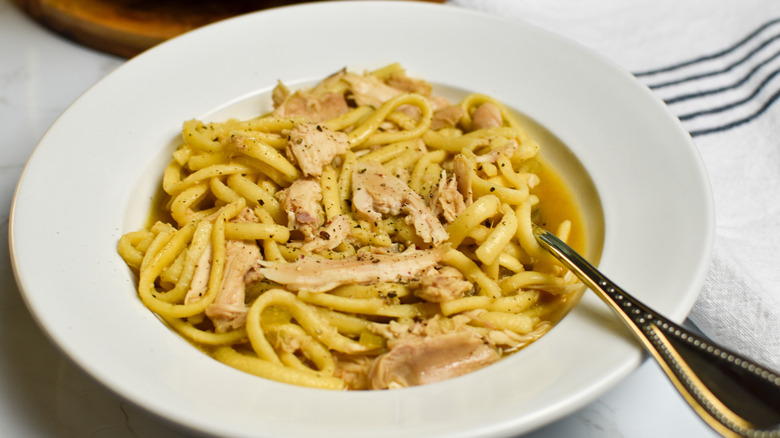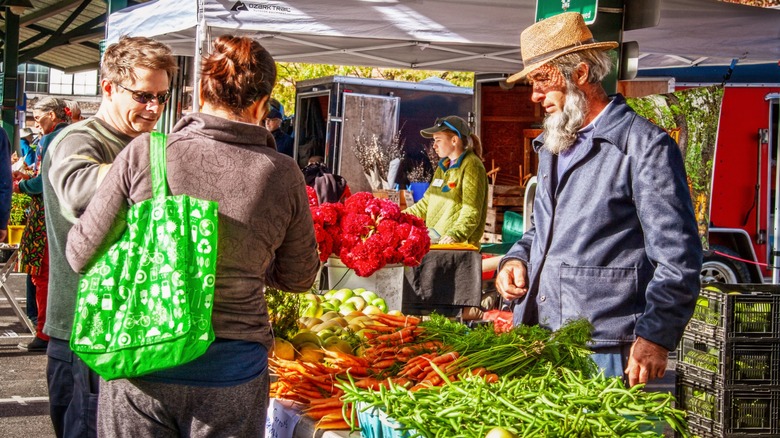What Makes A Recipe Amish-Style?
The Amish remain one of the most distinctive communities in the United States. Followers of the 17th-century, Swiss anabaptist leader, Jakob Ammann, the religious sect arrived in the United States early the next century and famously settled in areas throughout the eastern United States, especially in Lancaster County, Pennsylvania, today's largest community. While they are largely known for their steadfast resistance to modern technology and society, as well as the strict guidelines they live by — be it use of horse and buggy, simple, old-world clothing, or prohibition of radio, TV, and computers — cuisine rarely comes into the conversation.
However, that's beginning to change as local and whole/slow-food trends align with traditional Amish cooking methods which reflect similar values and manifest in dishes drawn largely from Swiss-German traditions. Bread, meat, potatoes, noodles, cheese, milk, and farm-fresh fruits and vegetables are regular features in the casseroles, dumplings, pies, and cabbage rolls that populate Amish cookbooks. These are also prepared in simple, often pre-industrial ways, too, usually over wood fires, although coal and kerosene are sometimes used. Cast-iron skillets are prominent, too, as are slow cooking techniques, along with canning and pickling. Many Amish communities also incorporate influences from their neighbors, for example in Amish Soul Food.
From breakfast to dessert: Favorite Amish-style recipes
To understand what Amish-style cooking is, start with the recipes that feed their communities throughout the day. With a full day's labor ahead, breakfasts such as the Amish breakfast casserole tend to be hearty and filling. It combines hen-house eggs with onion, bacon, and shredded hash browns. Other ingredients regularly make appearances — including oatmeal, cereal, nuts, and dried fruits — depending on the recipe. Lunch tends to repurpose leftovers from the previous night's dinner into sandwiches, especially for kids in school. Dinner remains the major meal of the day and regularly features pot pies, Amish-style chicken and noodles, and scrapple — cornmeal and buckwheat flour baked with pork bits, often offal. Popular desserts include shoofly pie, pumpkin cheesecake, and apple dumplings.
Another important facet that draws people to Amish-style cooking is the farm-to-table approach, as the communities are primarily agricultural. This means many ingredients are grown in the same place they are consumed. That also goes for food products, be it butter, cheese, sauerkraut, and so on — imbuing Amish dishes with that freshness and flavor that come with hyperlocal ingredients. This salt-of-the-Earth approach to cooking is further enhanced by family recipes handed down through generations, often marked up by each passing one with tips and adjustments. This makes Amish-style cooking far more focused on satisfaction and satiation than flash and experimentation, as well as a tribute to those who came before.

